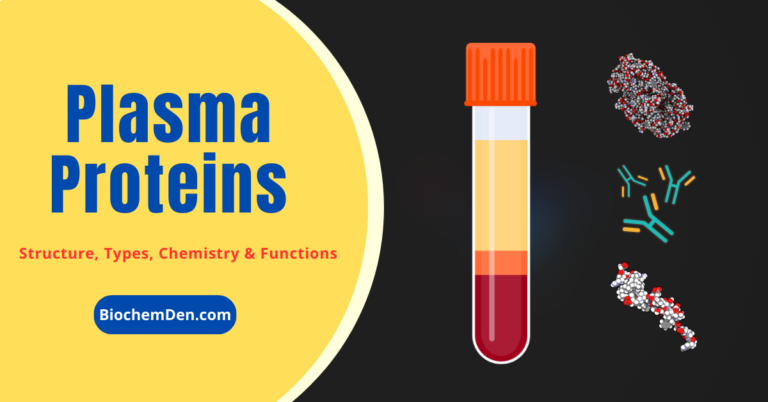Plasma protein purification is a crucial process in biochemistry and medical research. It involves isolating proteins from the blood plasma, which can then be studied and analyzed for various purposes. This article will provide a comprehensive guide on plasma protein purification, covering everything from its definition to its applications.

Plasma is the liquid component of blood, which makes up about 55% of the total blood volume. It contains various types of proteins, including albumin, immunoglobulins, clotting factors, and enzymes. Plasma protein purification involves isolating and purifying these proteins from the plasma.
What is plasma protein purification?
Plasma protein purification is a technique to isolate and purify specific proteins from the blood plasma. The process involves separating the plasma proteins from other blood components, such as red and white blood cells, platelets, and cellular debris.
Why is plasma protein purification necessary?
Plasma protein purification is a crucial technique in biochemistry and medical research. Here are some reasons why:
Study of Protein Structure and Function
Plasma protein purification enables researchers to isolate and study individual proteins in the blood plasma. It can provide insights into various biological processes and help identify potential drug targets. For example, purified clotting factors can be studied to understand the molecular mechanisms underlying blood clotting disorders.
Development of Diagnostic Tests and Therapies
Purified proteins from plasma can be used to develop diagnostic tests and therapies. For example, purified immunoglobulins can be used to develop vaccines and antibody therapies for infectious diseases and cancer. The development of diagnostic tests for various diseases, such as HIV and Hepatitis C, also relies on purified plasma proteins.
Production of Therapeutic Proteins
Plasma protein purification is essential for the production of therapeutic proteins. These proteins treat many diseases, including blood clotting disorders, immune deficiencies, and autoimmune diseases. Purified clotting factors, such as Factor VIII and Factor IX, are used to treat hemophilia, while purified immunoglobulins treat primary immunodeficiency disorders.
Research of Protein-Protein Interactions and Signaling Pathways
Purified plasma proteins are also used to study protein-protein interactions and signaling pathways. Researchers can study how proteins interact and how they are regulated in the body. This information can be used to develop new drugs and therapies that target specific proteins or pathways.
Analysis of Post-Translational Modifications
Plasma protein purification is critical for the analysis of post-translational modifications of proteins. These modifications can affect the function and stability of proteins, and their analysis is essential for understanding various biological processes. For example, the glycosylation of proteins can affect their stability and function, and the analysis of glycosylation patterns is important in developing biological drugs.
Types of Plasma Proteins
Several types of plasma proteins exist, including albumin, globulins, clotting factors, and complement proteins.
- Albumin is the most abundant protein in the plasma, making up about 60% of the total protein content. It plays a vital role in maintaining the osmotic pressure of the blood and transporting various molecules, including hormones and drugs.
- Globulins are a diverse group of proteins that include immunoglobulins, vital immune system components, and transport proteins, such as transferrin and ceruloplasmin.
- Clotting factors are proteins that are essential for the formation of blood clots. These include fibrinogen, prothrombin, and several other factors.
- Complement proteins are a group of proteins that play a critical role in the immune system by helping to destroy invading pathogens.
Methods of Plasma Protein Purification
Plasma protein purification is a crucial process that enables researchers to study the structure and function of individual proteins in the plasma and develop diagnostic tests and therapies.
Several methods of plasma protein purification can be utilized, each with its advantages and disadvantages.
a. Chromatography
Chromatography is a widely used protein purification method that involves separating a mixture of proteins based on their physical and chemical properties. This technique involves passing the mixture of proteins through a column packed with a stationary phase, which separates the proteins based on their interactions with the stationary phase.
Different types of chromatography can be used depending on the properties of the protein of interest, including ion exchange chromatography, size exclusion chromatography, and affinity chromatography.
b. Electrophoresis
Electrophoresis is another commonly used protein purification method that separates proteins based on their charge and size.
This technique involves applying an electric field to a gel matrix, which causes the proteins to migrate through the gel.
The proteins can then be visualized and collected based on their position in the gel.
c. Fractionation
Fractionation is a method of separating proteins based on their size and solubility. This technique involves subjecting the plasma to different salt concentration levels, which causes the proteins to precipitate out of the solution at different concentrations.
Fractionation is often used with other purification techniques, such as chromatography and electrophoresis, to achieve high protein purity.
d. Immunoprecipitation
Immunoprecipitation is a technique that utilizes antibodies to isolate specific proteins from a complex mixture.
This method involves incubating the plasma with an antibody specific to the protein of interest.
The antibody-protein complex can then be isolated using techniques such as centrifugation and chromatography.
e. Affinity Purification
Affinity purification is a technique that uses a ligand to bind to a specific protein selectively. The ligand is attached to a solid support, such as a resin or a magnetic bead.
The plasma is then passed over the ligand, and the protein of interest binds to the ligand. The protein can then be eluted from the ligand under specific conditions.
f. Ultrafiltration
Ultrafiltration is a method of protein purification that uses a semipermeable membrane to separate proteins based on their size.
This technique involves passing the plasma through a membrane with a specific pore size, which allows smaller molecules, such as salts and small proteins, to pass through.
In comparison, larger molecules, such as albumin and immunoglobulins, are retained.
Each method of plasma protein purification has its strengths and weaknesses, and the choice of purification method depends on the properties of the protein of interest and the requirements of the downstream applications.
By combining these techniques, researchers can achieve high protein purity and isolate individual proteins for further study and development.
Applications of Plasma Protein Purification
Plasma protein purification has a wide range of applications in research and medicine. Here are some of the main applications:
a. Drug Discovery and Development
Purified plasma proteins are used in drug discovery and development to identify potential targets for drug therapies.
Proteins crucial in disease processes can be identified and targeted with small-molecule drugs or biological therapies.
b. Immunoglobulin Therapy
Immunoglobulins are proteins that play a key role in the immune system.
They can be purified from plasma and used as a therapy for various immune disorders, including primary immunodeficiencies and autoimmune diseases.
c. Vaccines
Purified plasma proteins can be used to develop vaccines for infectious diseases, such as hepatitis B and tetanus.
The proteins can stimulate an immune response in the body, which can help prevent or treat the disease.
d. Blood Clotting Disorders
Purified plasma proteins, such as clotting factors, treat blood clotting disorders like hemophilia.
These proteins can be administered to patients to help them form blood clots and prevent excessive bleeding.
e. Research
Purified plasma proteins are used in research to study various biological processes, including protein-protein interactions, enzyme kinetics, and structural biology.
They are also used in the development of diagnostic tests for various diseases.
f. Tissue Engineering
Purified plasma proteins can be used in tissue engineering to create artificial tissues and organs.
The proteins can be used as a scaffold to support the growth and development of cells, which can then be used to create functional tissues.
Plasma protein purification has a wide range of applications in medicine and research. Purified plasma proteins are used in drug discovery, immunoglobulin therapy, vaccine development, blood clotting disorders, tissue engineering, and research.
These applications highlight the importance of plasma protein purification in advancing our understanding of biology and developing new therapies for various diseases.
Frequently Asked Questions (FAQs)
What is plasma protein purification used for?
Plasma protein purification is used to isolate and purify specific proteins from the blood plasma for various applications, including developing diagnostic tests and therapies and studying biological processes.
What are the types of plasma proteins?
The types of plasma proteins include albumin, globulins, clotting factors, and complement proteins.
What are the methods of plasma protein purification?
The methods of plasma protein purification include chromatography, electrophoresis, fractionation, immunoprecipitation, affinity purification, and ultrafiltration.
What is the most abundant protein in the plasma?
Albumin is the most abundant protein in the plasma, making up about 60% of the total protein content.
Why is plasma protein purification important?
Plasma protein purification is crucial because it allows researchers to study individual proteins in the plasma, providing insights into various biological processes and leading to new diagnostic tests and therapies.
Final words
Plasma protein purification is a critical technique in biochemistry and medical research. It allows researchers to isolate and study individual proteins in the blood plasma, providing insights into various biological processes and leading to new diagnostic tests and therapies.
There are several methods of plasma protein purification, including chromatography, electrophoresis, fractionation, immunoprecipitation, affinity purification, and ultrafiltration, each with its advantages and disadvantages.
Discover more from Biochemistry Den
Subscribe to get the latest posts sent to your email.





